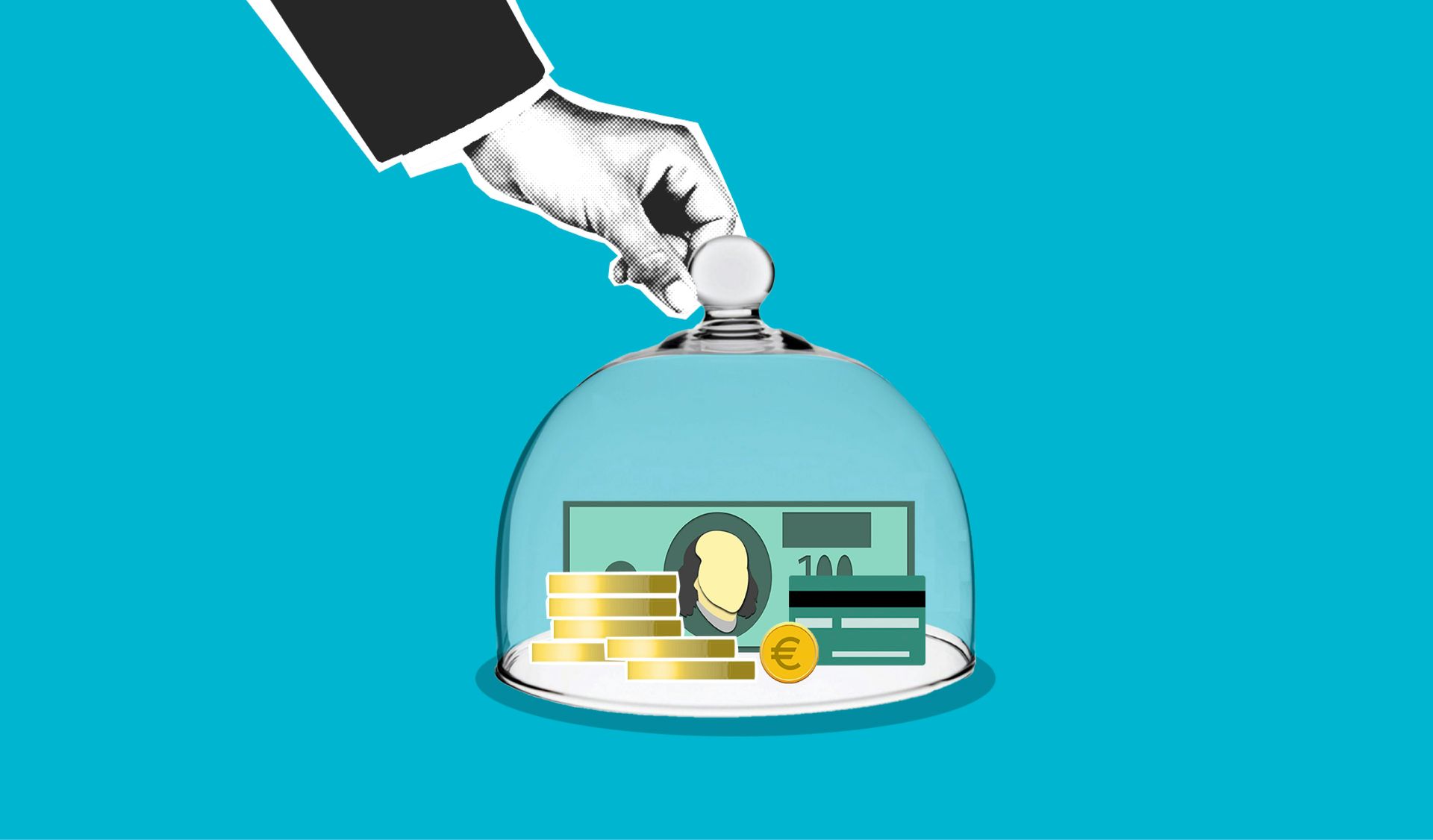
Get Quick and Easy Loans: Apply Online Today

In today's fast-paced world, financial needs can arise unexpectedly, whether it’s a sudden medical expense, a home repair that can't wait, or an urgent opportunity that demands immediate cash. For many, the quest to secure quick and accessible financing often leads to the question: how to get a loan that fits your needs? In Canada, the landscape for borrowing has evolved significantly, providing individuals with innovative solutions to meet their financial challenges. With a variety of unsecured loans available, you can get a loan in Canada online without the hassle of lengthy paperwork or extensive credit checks. Let’s explore how you can easily navigate the online loan application process and gain access to the funds you need, when you need them.
Understanding the Different Types of Loans
When navigating the world of personal finance, understanding the different types of loans available can be crucial for making informed decisions. Loans come in various shapes and sizes, tailored to meet specific needs and financial situations. At their core, a loan is an agreement between a borrower and a lender, where the lender provides a certain amount of money that the borrower agrees to pay back over time, usually with interest. This fundamental structure lays the groundwork for a variety of loan types, each serving distinct purposes.
One common type of loan is the personal loan, which individuals typically utilize for consolidating debt, funding large purchases, or covering unexpected expenses. Personal loans can be unsecured, meaning they don't require collateral, or secured, where the borrower offers assets like a car or home to guarantee the loan. The interest rates for personal loans vary based on creditworthiness, making it essential for borrowers to maintain good financial health. Alternatively, there are also mortgage loans crafted specifically for purchasing real estate. These loans often involve larger amounts and longer repayment terms, with the property itself serving as collateral, which helps lower the risk for lenders.
Another significant category is student loans, specifically designed to help cover the costs of higher education. These loans often come with lower interest rates and more favorable repayment terms, recognizing the unique circumstances of students. Federal student loans typically offer additional benefits, such as income-driven repayment plans, making them a popular choice among borrowers pursuing their educational goals. On the other hand, business loans serve entrepreneurs looking to start or expand their ventures, providing the necessary capital to launch new projects or manage daily operational expenses.
Overall, understanding the different types of loans available can empower borrowers to choose the right financial products for their needs. Whether dealing with personal, mortgage, student, or business loans, it’s important to weigh the pros and cons carefully and consider how each loan type fits into your broader financial strategy. Being well-informed can help you navigate the lending landscape wisely, ensuring that you make choices that support your long-term financial goals.
Tips for Choosing the Right Loan Option for You
Choosing the right loan option can be a daunting task, especially with the multitude of offers available on the market. It's essential to understand your financial needs and goals before proceeding. Begin by assessing how much you need to borrow, as well as the purpose of the loan—whether it's for a home, car, education, or debt consolidation. This will provide you with a clear framework to evaluate different types of loans, such as personal loans, mortgages, and auto loans, each tailored to specific requirements.
Next, consider the terms of the loans you’re exploring. Interest rates can vary widely and might be fixed or variable. A fixed-rate loan offers the advantage of predictable payments over time, making budgeting easier, while a variable-rate loan can start low but may increase with market fluctuations. Additionally, pay close attention to the loan term; longer terms can mean lower monthly payments but may also result in paying more interest over the life of the loan. Use online calculators to compare total costs for various options, ensuring you’re fully informed about the financial implications.
It’s equally important to look beyond just the numbers. Evaluate the lender’s reputation and customer service, as a supportive lender can make your borrowing experience much smoother. Read reviews and ask for recommendations, and don’t hesitate to reach out to lenders with questions. Understanding the fees involved, such as origination fees or prepayment penalties, can also help you make a more informed decision. Transparency plays a crucial role in ensuring there are no surprises later on.
Lastly, consider your own credit situation, as it will significantly impact the loans available to you and the terms you can secure. If your credit score is less than ideal, you might explore options that cater to those with lower scores or consider working on improving your credit before applying. Ultimately, taking the time to do thorough research and reflecting on your financial situation will empower you to choose the right loan that not only meets your immediate needs but also supports your long-term financial health.
The Dos and Don'ts of Applying for Loans Online
When considering applying for loans online, it is essential to approach the process with caution and knowledge. The internet offers a myriad of options for borrowers, making it both a convenient and overwhelming experience. To navigate this landscape effectively, it’s crucial to understand the dos and don’ts of online loan applications. One of the primary dos is to research lenders thoroughly. Take the time to compare interest rates, fees, and terms from various lenders to ensure you're making an informed decision. Additionally, reading customer reviews can provide insight into the lender's reputation and reliability, which is vital for a trustworthy borrowing experience.
On the other hand, a significant don’t is to rush into applications without understanding the fine print. Many borrowers get excited about a seemingly attractive loan offer and fail to review the terms and conditions thoroughly. Hidden fees, prepayment penalties, and variable interest rates can lead to unexpected costs in the long run. Moreover, it’s crucial to avoid applying for multiple loans simultaneously, as this can negatively impact your credit score. Each application generates a hard inquiry on your credit report, and too many inquiries can portray you as a risky borrower, making it harder to secure favorable loan terms.
Another crucial aspect to consider is your credit health before applying for loans online. This is a do that can significantly enhance your chances of being approved and landing better rates. Review your credit report and ensure that any inaccuracies are corrected. Improving your credit score by paying down existing debts and making timely payments can position you as a more attractive applicant to lenders. Conversely, don’t neglect your budget and borrowing capacity. Know how much you can afford to borrow and ensure that your monthly payments won't strain your finances.
Lastly, always prioritize security when applying for loans online. Opt for lenders that use encryption and secure processes, such as those that are well-established and regulated. Avoid sharing personal information on unsecured websites and be cautious of any lender that asks for excessive personal details upfront. Remember, a trustworthy lender will prioritize your security and privacy. By following these dos and don’ts, you can navigate the online loan application process more effectively, ensuring a smoother borrowing experience.
How to Speed Up the Loan Approval Process
The loan approval process can often feel lengthy and cumbersome, leaving borrowers anxious about their financial future. However, there are several strategies you can employ to speed up the process and obtain your loans more efficiently. One of the most effective ways to ensure a quick approval is to gather all necessary documentation before you even start the application. This typically includes proof of income, tax returns, bank statements, and any other relevant financial information. By presenting a complete package, you significantly reduce the chances of delays that can arise from missing paperwork or additional requests from the lender.
Another crucial step in expediting your loan approval is to maintain open communication with your lender. It's important to stay responsive and ready to provide any additional information that may be requested during the underwriting process. If your lender can easily reach you, they can quickly address any issues that may arise. Additionally, consider discussing your loan options in detail upfront. Understanding the specific requirements and preferences of your lender can help you tailor your application to meet their criteria more effectively, streamlining the decision-making process.
Moreover, it’s wise to check your credit score before applying for loans. A higher credit score can lead to a quicker approval, as it indicates to lenders that you're a responsible borrower. If you find any discrepancies or areas for improvement in your credit report, take the time to address them prior to submitting your loan application. By enhancing your creditworthiness, not only do you increase your chances of approval, but you may also secure better loan terms.
Lastly, consider consolidating your loan applications. If you are shopping for loans with various lenders, try to do so within a short timeframe. Many credit scoring systems consider multiple inquiries for a loan type as a single inquiry if done within a specific period. This strategy not only minimizes the impact on your credit score but also allows lenders to see that you’re serious about securing financing quickly, potentially speeding up their evaluation of your application. By being proactive and organized throughout the process, you can significantly reduce the time it takes to receive approval for your loans.
Managing Your Finances After Securing a Loan
Securing a loan can be a significant milestone, offering the financial flexibility to pursue your goals, whether that’s buying a home, funding education, or starting a business. However, once you’ve secured the loans, it’s crucial to manage your finances thoughtfully to ensure you meet your repayment obligations while still maintaining a comfortable standard of living. Responsible financial management will not only help you avoid debt-related stress but also improve your credit rating in the long run.
One of the first steps after obtaining a loan is to create a comprehensive budget that incorporates the new monthly loan payment. Review your income and existing expenses to determine how this payment fits into your financial picture. Prioritize essential expenses and minimize discretionary spending, if necessary, to create a buffer for unexpected costs. Consider setting up an automatic transfer to your loan account to ensure payments are made on time, as missed payments can lead to penalty fees and damage your credit score.
In addition to managing your monthly budget, it's wise to be proactive about your financial future. Explore ways to increase your income, whether through a side hustle, freelance work, or seeking a promotion at your job. Any extra funds can be allocated towards loan repayment or savings for emergencies, which can alleviate the financial pressure of your loan. Building an emergency fund is particularly important, as it provides a safety net in case of unexpected expenses that could otherwise hinder your ability to pay your loans.
Lastly, keep lines of communication open with your lender. If you encounter financial difficulties, inform them as soon as possible; many institutions offer deferment or modification programs for borrowers facing hardship. Staying informed about your loans and maintaining a flexible approach to your financial planning can make a significant difference in effectively managing your finances after securing a loan. By being proactive and responsible with your money, you can navigate this financial chapter with confidence and ease.
Benefits of Online Loan Applications
In today's fast-paced digital world, the process of applying for loans has been significantly transformed by the rise of online platforms. One of the most notable benefits of online loan applications is the convenience they offer. Borrowers no longer need to visit physical banks or lenders, fill out cumbersome paperwork, and wait in long lines. With just a few clicks, individuals can access a variety of loan options from the comfort of their home or on-the-go, making it easier to compare terms, interest rates, and eligibility criteria across multiple lenders.
Another advantage of applying for loans online is the speed of the process. Traditional loan applications often require several days or even weeks for approval, leaving applicants in limbo. In contrast, many online lenders have streamlined their processes, allowing for quicker decisions that can lead to fast funding. Some platforms even offer same-day approvals, which can be a lifesaver in emergencies when cash is needed urgently. This expedited service not only reduces stress for borrowers but also opens up opportunities for funding when timing is critical.
Moreover, online loan applications tend to have lower fees and more competitive interest rates compared to traditional brick-and-mortar lenders. This is largely due to the reduced overhead costs that online lenders face, which enables them to pass savings on to their clients. Additionally, the transparent nature of online platforms allows borrowers to easily understand the total cost of their loans, including any applicable fees and interest. This level of clarity can help individuals make informed financial decisions and avoid unpleasant surprises down the line.
Lastly, the accessibility of online loan applications is a significant benefit for many people. Borrowers with varying credit histories and financial situations can find specialized lenders that cater to their specific needs. This democratization of access means that individuals who may have been overlooked by conventional lenders now have a chance to secure loans and improve their financial standing. Overall, the integration of digital technology into the lending process has made obtaining loans simpler, faster, and more inclusive for a broader audience.
Building a Strong Credit Profile for Better Loan Terms
Building a strong credit profile is essential for anyone seeking favorable terms on loans. A healthy credit score not only opens doors to better interest rates but also makes the borrowing process smoother and more efficient. Lenders assess your credit history to determine your reliability and risk level, which ultimately affects the kinds of loans you can access and the conditions tied to them. Therefore, understanding how to cultivate and maintain an excellent credit profile is crucial for anyone looking to make significant financial decisions, whether it's for a home, a car, or any other substantial investment. One of the first steps towards building a solid credit profile is to pay your bills on time consistently.
Payment history accounts for a significant portion of your credit score, so establishing a habit of timely payments will positively influence your profile. Additionally, keeping your credit utilization low—ideally under 30% of your available credit—is another vital component. High credit utilization can signal to lenders that you may be overextending financially, which could result in higher interest rates or even loan denials. By managing your credit wisely, you demonstrate responsible financial behavior, making you more attractive to potential lenders.
Regularly reviewing your credit report is also an important practice that should not be overlooked. Errors or inaccuracies can hurt your credit profile and lead to worse loan terms. By obtaining your credit report from major reporting agencies and scrutinizing it for discrepancies, you can address any issues promptly. Furthermore, diversifying your credit mix, such as incorporating installment loans (like a mortgage or car loans) alongside revolving credit (like credit cards), can add to the strength of your credit profile. A balanced mix shows lenders that you can manage different types of credit responsibly, which can lead to more favorable loan options.
Finally, building a strong credit profile is not a task that can be accomplished overnight; it requires patience and long-term commitment. As your credit history develops and you maintain healthy financial habits, you will likely find that lenders are more willing to offer competitive terms on loans. With a good credit profile, not only will you save money through lower interest rates, but you’ll also gain access to a broader range of financing opportunities. In the realm of personal finance, a robust credit profile can be your key to achieving your financial goals and securing a better future.


*Disclaimer: Brand Street Agency is authorized to use goPeer's trademarks and branding solely for marketing purposes related to goPeer’s loan products with prior written consent from goPeer. goPeer Corporation and its affiliates are not responsible for any content, statements, or representations made by Brand Street Agency on this website. Loan approvals are not guaranteed and are subject to goPeer's underwriting policies. Terms and conditions apply. For the most accurate and up-to-date information regarding goPeer’s loan products, please visit goPeer's official website (https://gopeer.ca). Brand Street Agency operates as an independent entity and is not an employee, representative, or affiliate of goPeer Corporation or its affiliates. Brand Street Agency may receive compensation for its services.
goPeer offers unsecured personal amortizing loans throughout Canada in amounts from $1,000 to $35,000 with terms of 3 or 5 years and Annual Percentage Rates (APR) between 8.99% and 34.99%, depending on an assessment of the borrower’s credit profile, financial position, and ability to service the loan. If a payment is unsuccessful, goPeer may charge an unsuccessful payment fee of $50. If a payment is late 30 or more days, goPeer may charge a late payment fee of $25 or 5% of the payment due, whichever is greater. goPeer charges an origination fee included in the advertised APR. There are no other fees on loans. Loans are subject to credit and underwriting approval and lending rules may vary by province. For example, the average borrowing cost paid on a $9,400 unsecured personal loan at an APR of 18.8%, with a 5-year term and bi-weekly payments of $104.80 is $4,794.49.













